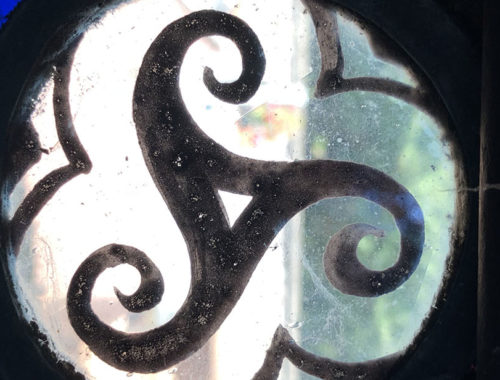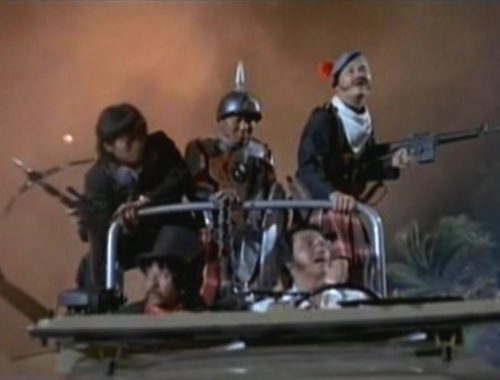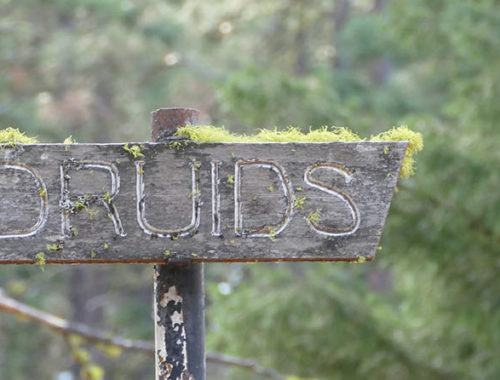Sheela-na-Gigs: Girl Power
If you’re fortunate enough to be wandering around a medieval church or castle in Ireland or the UK, gazing at the many carvings adorning the arches or cornices, you might see a hideous face grinning at you from between the saints. If you look closer, you might see that the face belongs to a hag—or what looks like a hag, because honestly it’s hard to tell her gender by her face. But the fact that she’s female becomes clear very quickly when you move closer and see that she’s naked, squatting, and exposing her vulva to the world—often even holding it open so you can get a better look—proudly, mockingly, or at least without a care in the world. Consider yourself lucky. You’ve found a Sheela na gig.
What’s a Sheela na Gig?
Sheela na gigs are found on churches, castles, and occasionally other buildings in Ireland, England, and Scotland. The majority were probably carved between the eleventh and thirteenth centuries, but Sheelas were still being created up until the sixteenth century, at least in Ireland. They vary widely in style and design, but they’re all naked, hag-like women with exposed vulvas. Many of them have enlarged heads, and oftentimes they’re squatting and holding their vulvas open. Sometimes they have hair or breasts. They’re often worn by time and the weather, or by touch. It’s customary in some areas to rub the local Sheela (if she’s in a place that can be reached), because Sheelas are considered apotropaic—they can ward off bad luck. And some rub them because they believe they’re fertility symbols.
Where to Spot One
Sheelas are commonly found incorporated into keystones, over windows, and in quoins, but sometimes they’re tucked out of the way, like the one under the altar at Killinaboy Church in Ireland. Sheelas were routinely destroyed during the Reformation, and even more so during the Victorian Era, so they’re sometimes found buried or tucked into odd places in walls, because someone removed the Sheela from the church to protect it and replaced it when the danger had passed, but wasn’t able to put it in its original spot.
What Do They Mean?
Nobody knows for certain why the Sheelas were created and what they mean. Many people think they depict pre-Christian goddesses. The Celtic myths in particular had no shortage of hags. There is also some thought that the Sheelas are a particularly Celtic interpretation of the Continental Romanesque trend toward including sexual carvings on their churches to demonstrate the folly of sin. In my opinion this doesn’t hold water, though, as the Sheelas seem quite proud of their vulvas, and most of the sexual carvings on the Continent showed men in acrobatic poses doing things that most men aren’t capable of doing without a lot of circus training.
Since we’ll never know for sure, I choose to believe the “Niall of the Nine Hostages” theory. In the Adventures of the Sons of Mugmedón, there’s a famous story about Niall and his brothers, who go hunting and get terribly thirsty. One brother finds a well, but it’s guarded by a hideous hag with rotten teeth and covered in boils. She says she’ll give them a drink of water in exchange for a kiss. The first two brothers run away in disgust. The third is also disgusted, but gives her a quick peck on the cheek. Niall, however, not only kisses her, he also sleeps with her. Afterward she transforms into the goddess of sovereignty and grants him a prize: 29 generations of his family will be tied to Tara Hill, meaning they’ll be kings of Ireland, and the brother who kissed her will have one generation tied to Tara. The kings of Ireland were crowned at Tara Hill after enduring several challenges.
Many believe this is just a story created to establish (or legitimize) the authority of the O’Neil Clan in Ireland, but the importance in terms of Sheelas is this: St. Columba came from Niall’s line, and many of the churches that have Sheelas were started either by Columba or by monks off of Columba. So the Sheelas could be Columba reminding everyone of exactly who (in addition to the Christian god, of course) he gets his authority from—the Pagan hag goddess of sovereignty. As a Pagan, that amuses me to no end.
It’s also interesting that the male and female principles are represented at Tara Hill by the Lia Fail, a phallic stone that supposedly cries out when the new king draws near, and a pair of pillar stones which would part to allow the chariot of the future king through and nobody else’s. (No sexual symbolism there at all.) The taller of the two pillar stones, now known as St. Adamnán’s Cross, has a Sheela on it.
Learn More
If you’re interested in Sheelas, check out this video presentation by Meghan Rice. It gives a thorough overview, including the Niall story. And I want to give a shameless plug for what I think is hands-down the best book on Sheelas (and apparently Meghan Rice does, too, because she mentions it): The Sheela-Na-Gigs of Ireland and Britain: The Divine Hag of the Christian Celts by Joanne McMahon and Jack Roberts. It talks about the origins of the Sheelas and describes nearly 200 of them, with drawings of each. I don’t know Joanne McMahon, but I’ve met Jack Roberts, and he’s a walking encyclopedia about Sheelas and a delightful guy to boot.




